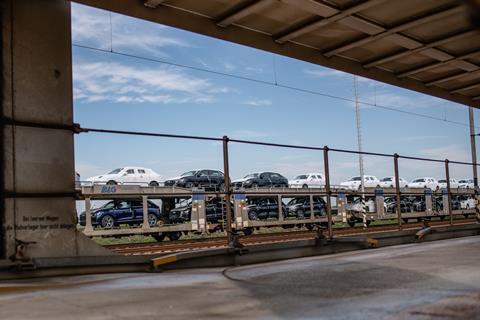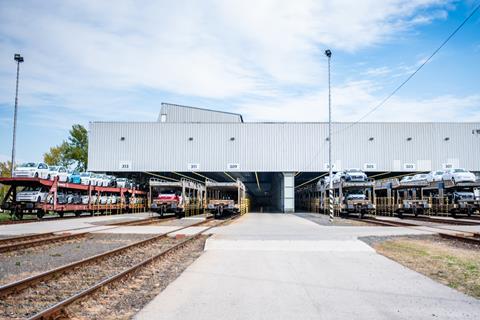Slovakia stays strong in straightened times
Slovakia has the world’s highest per capita rate of vehicle production. But after recent setbacks, including job cuts, its government has laid out a new strategy for automotive
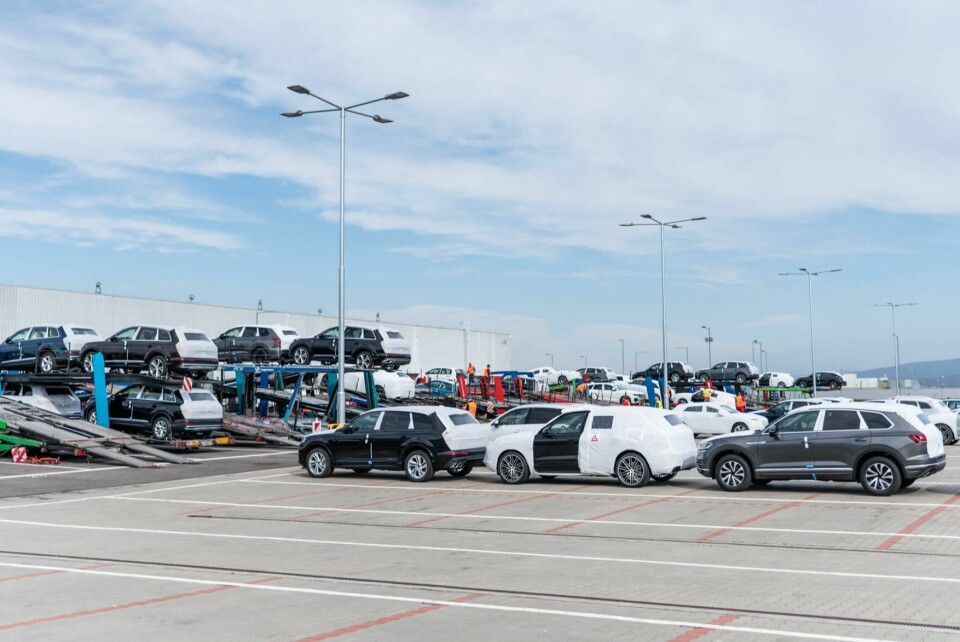
The news announced earlier this year that Volkswagen (VW) was going to scrap 3,000 of the 15,000 jobs at its Slovakian plant came virtually out of the blue and sparked off speculation that the country’s authorities might have been so absorbed with labour reform during the ongoing election campaign that they have unintentionally made the domestic automotive sector less attractive for foreign investors than it used to be.
Historically, VW was one of the pillars of the Slovak automotive industry, which in turn is hugely important for the national economy. Four carmakers – VW, PSA, Kia and Jaguar Land Rover (JLR) – together with their tier one and tier two suppliers generate 44% of the country’s total industrial production and 40% of its exports, worth €26 billion ($29.1 billion) per year. Both directly and indirectly, they also employ 250,000 people, according to Sario, the Slovak Investment and Trade Development Agency.
“What will happen in the automotive industry in Slovakia is not clear, because our future is decided now in the headquarters of the automakers”
Slovakia is known for having the world’s highest rate of per capita finished vehicle production. In 2018 this stood at 200 vehicles per 1,000 inhabitants, compared with 120 in the Czech Republic. A further increase in capacity utilisation at the new Jaguar Land Rover (JLR) plant in the country, at Nitra, will push up total vehicle production in Slovakia from slightly over 1m in 2018 to 1.35m in 2020. As a result, Sario expects the per capita figure to grow to 249 by 2020.
As for VW, the company emphasised that the upcoming changes at its Bratislava plant were decided in order to achieve better effectiveness and maintain long-term viability.
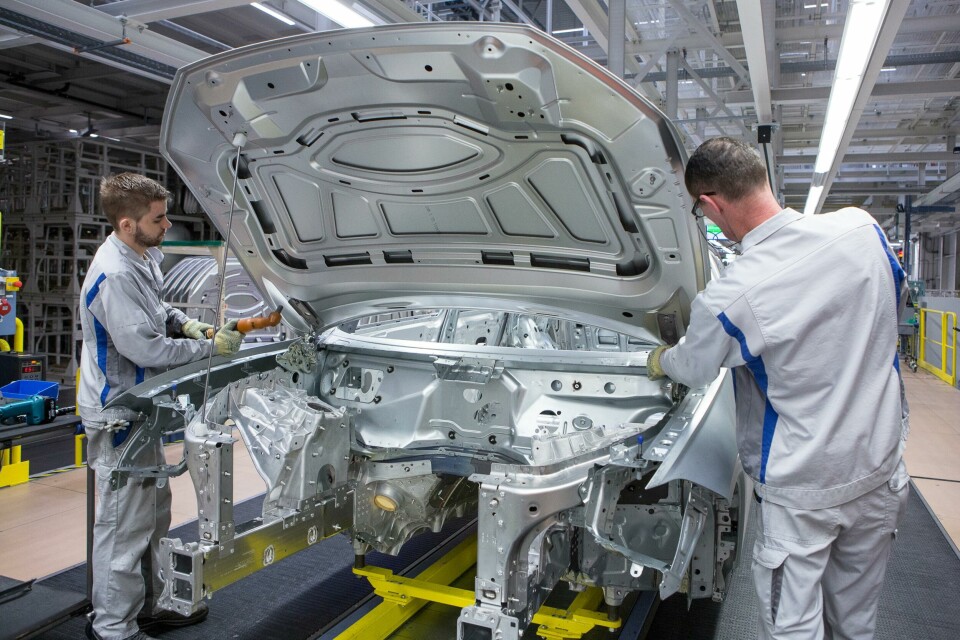
“Especially in this decisive period of time, it is of great importance for the company to work on increasing its efficiency in order to strengthen its position within the corporation and to enhance its competitiveness when decisions on the assignment of new products are being taken,” Lucia Makayova, spokesperson for VW Slovakia, told Automotive Logistics.
In a statement earlier this year, VW said that the Slovak part of the business would reduce the number of production shifts that make higher-end SUVs as well as cheaper small family cars including the VW e-up!, the only electric vehicle (EV) it currently makes in the country.
“After a period of huge investments and several launches, the company is currently focusing on series production of the existing production portfolio and increasing its efficiency – with regard to the goal of the brand – by 30% by 2025. Volkswagen Slovakia intends to achieve a big part of its goal by the year 2020,” Makayova added.
Warning signs
The job cuts this year are the first time that VW has reduced its workforce in Slovakia since 2009. Another carmarker in the country, in fact its smallest – Kia – will also reduce staff this year, for the first time since launching there in 2006. The OEM produces the Sportage, Cee’d and Proceed at its Zilina factory.
“If we are talking about warning signals, [the cutbacks are] a signal for the government of the Slovak Republic and for our industry,” says Alexander Matusek, president of the Slovak Automotive Industry Association (ZAP).
Matusek points out that since JLR’s announcement in 2015 that it would set up a new factory, the country has not received any other significant investments – with the exception of JLR suppliers, which were naturally expected to follow their customer.
“The growth of wages has been outpacing growth of productivity for some time now. This would be only a minor problem… However, the government has been significantly adding fuel to this trend”
“There are several reasons behind that, including the rise in labour costs. Unfortunately, Slovakia has been in an election campaign for almost three years. Ruling parties during this time have been fighting among themselves including in terms of offering a [better] social package and worsening payroll tax,” says Matusek.
He adds that, although this has negatively affected the investment environment, the outlook for the industry is probably quite bright. “Regarding forecasts for the next four to five years, we expect stable development with moderate growth, which is linked to the launch of production at JLR’s Nitra plant.
“On the other hand, it is not possible to predict the further evolution under the influence of various political and economic changes and decisions in the global space. What will happen in the automotive industry in Slovakia is not clear, because our future is decided now in the headquarters of the automakers,” Matusek added.
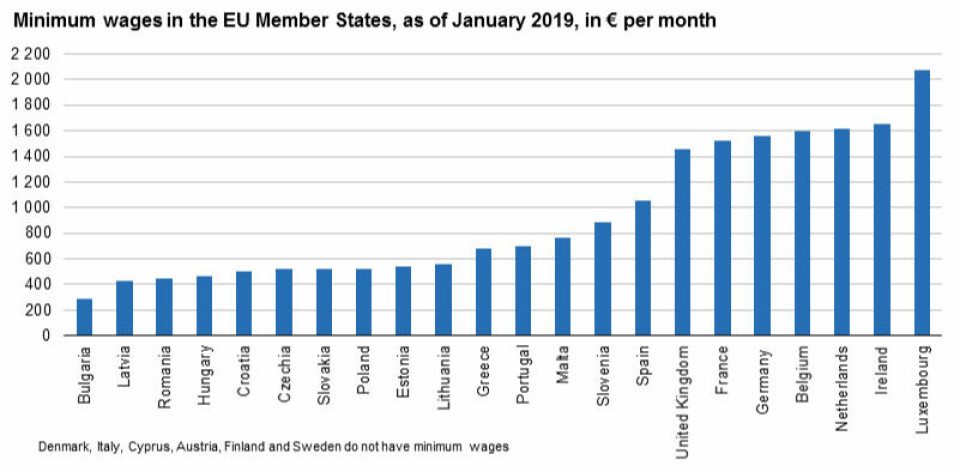
No longer so cheap
Historically, Slovakia has been perceived as a cheap location for the assembly and transportation of finished vehicles, and this is one reason why it has attracted four carmakers and over 350 automotive components manufacturers. But it might no longer be the case.
“The growth of wages has been outpacing growth of productivity for some time now,” comments Martin Vlachynsky, analyst at the Slovak Institute of Economic and Social Studies. “This would be only a minor problem; when the unemployment is record low and the economy grows, wage growth is a natural reaction. However, the government has been significantly adding fuel to this trend. It drastically increased the minimum wage, which has grown 48% since 2014 and the largest increase, from €520 to €580 [per month], is on its way – and that has had a spillover effect on all wages.”
“There are several signs of uncertainty in economies worldwide at the moment, and Slovakia is no different. However, we stay very committed to our state-of-the-art factory in Zilina”
Moreover, he explains that the government has “substantially increased” the mandatory hourly wage surcharge for overtime, night, weekend and public holiday work, as well as introducing some additional burdens on employers, such as ‘recreation vouchers’. Employers now have to provide their workers with €275 worth of vouchers per year which are to be used in Slovak resorts.
“These effects came in quick succession and resulted in massive increases in the cost of an employee, especially in industries which use a lot of night or weekend work and are wage-sensitive,” Vlachynsky says.

A source in the Slovak automotive industry, who preferred not to be named, adds: “The real threat is that not only the automotive plants are affected; the entire supply chain is affected. Tier one and tier two suppliers, warehouses, transport companies, logistics – the costs are rising everywhere, pilling up for the carmakers.”
“This would not be such a big problem if we did not have cheap neighbours: Bulgaria, Serbia, some other Balkan states and Turkey. There was talk that they might become more attractive for carmakers and spare parts producers, as well as simply to store automotive products, but nobody took it seriously until recently. The VW case clearly showed that the threat is real,” he says.
Continuing commitments
Yet analysts believe it is too early to say that Slovakia has completely lost its competitive edge. “It is true that some plants will go back to normal and will no longer be at top capacity,” says Denis Schemoul, manager of the EMEA light vehicle production forecasting department at IHS Automotive. He cites the end of the NSF family at VW and the new PSA plant in Morocco as factors eating into automotive production in Slovakia.
Yet he points out that the industry is cyclical and argues that new programmes will be awarded in the mid term. Even before VW postponed its planned factory in Turkey, due to the country’s widely condemned incursion into Syria in October, its Slovakian plant was in with a chance of further product allocations. “There is nothing indicating that Bratislava is out of the race for getting next-generation EV programmes from the VW Group, like PPE or MEB entry, for example,” says Schemoul.
After a period of huge investments and several launches, the company is currently focusing on series production of the existing production portfolio and increasing its efficiency by 30% by 2025”
When the company announced that it was cutting production shifts, it said there were no plans to allocate production of new EVs to Bratislava. Electromobility is a core element of VW Group’s overall strategy, however, and the OEM has pledged to develop 70 new EV models by 2023 with a €30 billion investment; things could well change.
“Also on the bright side, the Nitra plant from JLR will increasingly support production volumes in the country. Nitra apart, we think that each of the three plants [operated by VW, PSA and Kia] will continue with at least 300,000 units per year going forward. For these reasons, we believe that production volumes in Slovakia will sustain around 1.1m units per year,” Schemoul added.
This is partly confirmed by some of the carmakers. Kia, for example, said that it was going to increase production at its Zilina plant in the coming years. “We are very satisfied with our investment in our state-of-the-art factory in Zilina and liaise directly with the Slovakian government on any issues that may arise,” says spokesperson Pablo Gonzalez Huerta at Kia Motors Europe.
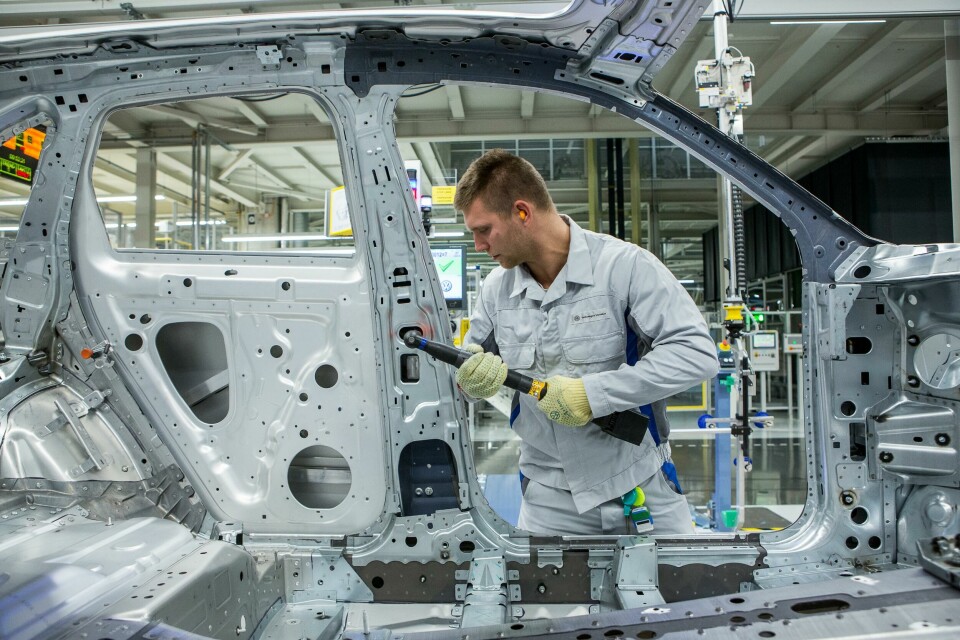
“We are of course following the economic developments in Slovakia, just like we do in every country where we operate. There are several signs of uncertainty in economies worldwide at the moment, and Slovakia is no different. However, we stay very committed to our state-of-the-art factory in Zilina and are, in fact, continuously looking for opportunities to even increase production in that factory,” Huerta confirms.
As for PSA, late last year Clarisse Grignard, spokesperson for PSA, told Automotive Logistics that the company had produced 300,000 vehicles at its Trnava plant in 2018 and planned to maintain this volume. PSA is producing the Peugeot e-208 at Trnava as part of a strategy that will see it offering electrified options across its full model line-up by 2025.
Boosting EV production
The Slovak Economy Ministry has responded to the challenges at hand with a bailout package adopted in 2019, which is intended to make the country a more attractive place for EV assembly.
“In cooperation with ZAP, the Ministry of Economy of the Slovak Republic prepared a set of measures aimed at removing barriers to the sustainable development of the automotive industry in Slovakia, including the supply network,” the press office of the Ministry told Automotive Logistics. “These involve the business environment, the level of R&D activities and the principles of the circular economy in the automotive industry.”
“We believe that production volumes in Slovakia will sustain around 1.1m units per year”
The Ministry created a scheme to support the establishment of electric charging stations and launched an open call of €500,000 in July this year. The minimum subsidy is €2,500, the maximum subsidy is €5,000, which is provided to AC charging stations with output power of at least 2 x 11kW. Eligible entities are cities and municipalities.
Based on this action plan, the Ministry expects the number of EVs in Slovakia to rise to 1.35m next year, compared with 1.09m in 2018. Another open call planned for December 2019 will support the purchase of battery-electric vehicles and plug-in hybrids, with a budget of €5m, the Ministry said.
Efforts to make the country more attractive for EV production have already brought some results. In 2019 the Slovak battery company InoBat signed a contract with American firm Wildcat Discovery Technologies to cooperate on the development and production of accumulators for the automotive industry. The investment should reach €100m, including investment in development and the cost of constructing a production line.
